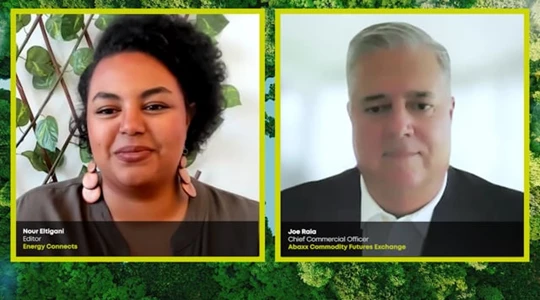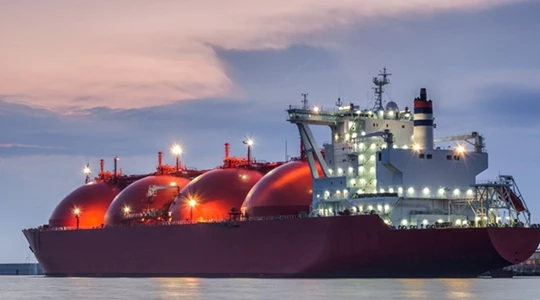Accelerating the Energy Revolution: key forces driving the transition
We are in the midst of a transformative shift. The energy transition is a global revolution that transcends boundaries and dominates the conversation of the day. No other industry captures global attention like the pursuit of energy security, and decarbonisation.
The Global Energy Transition Readiness Index report, developed with our knowledge partner, Roland Berger, has identified the five key drivers that will make or break our journey to net zero:
- Expanding renewables
- Enhancing energy efficiency
- Strengthening the electrical grid
- Optimising existing infrastructure
- Managing the supply chain
These drivers form the core of our strategy to develop and implement impactful, cutting-edge technologies and solutions.
Renewable revolution
It is no secret that renewable energy is a crucial lever for net-zero. We need to transition to clean, emission-free electricity generated from sources such as solar, wind, and even green hydrogen, to break free from the dependence on coal and gas.
For instance, Hydrogen Park South Australia boasts one of the largest hydrogen electrolysers in Australia today. With the 1.25MW Silyzer, green hydrogen is produced using water and renewable electricity and racks up zero carbon emissions. The highly dynamic proton exchange membrane technology is particularly suited for use cases that involve volatile and intermittent energy i.e. renewables.
Converting renewable energy to green hydrogen offers stability and dispatchability. Integrating hydrogen into existing infrastructure creates a seamless transition to a greener energy system.
So what can we do while building the infrastructure and assembling the necessary pieces for a global hydrogen value chain?
Redefining energy efficiency
As countries experience economic growth and population expansion, the demand for energy inevitably rises. How can we maximise efficiency to ensure we keep our resource consumption low?
The answer: digitalisation and modernisation.
In heavy industries, maintaining the safe and reliable operation of long-lasting, capital-intensive assets is crucial. With equipment lifespans of up to 25 years, staying up-to-date with the latest tools and technologies is vital.
We advocate a collaborative, data-supported approach, using big data for insights and implementing compressor modernisation and upgrades to optimise operations and maximise efficiency.
Still, decarbonisation encompasses a range of technologies and approaches, and energy efficiency is but one aspect. Deep decarbonisation of challenging industries like maritime, petrochemical, and transportation remains a priority. Electrification and carbon capture & storage systems have versatile applications in these industries. BlueVault™ energy storage solutions serve as batteries for vessels, suitable for both all-electric and hybrid energy storage applications.
Wired for Reliability
Access to reliable energy is a fundamental human right, as emphasised by the United Nations Sustainable Development Goals. Strengthening the electrical grid is essential for widespread electrification and renewable energy adoption. The rise in demand for electricity driven by electrification, digitalisation, and renewable energy requires fortified transmission networks and grid infrastructure.
A strong, secure, and resilient grid is imperative for a successful energy transition.
The ElectraNet substation in South Australia demonstrates the importance of the right momentum for grid stability. The South Australia grid operator contends with over 50 percent renewable energy in its grid. To stabilise the grid and prevent blackouts, the substation is equipped with two high-tech flywheel generators for a reliable energy supply.
High-Performance Compressors
As we decarbonise the energy system, capitalising on existing infrastructure can minimise the need for costly and time-consuming construction of new facilities, reducing financial and environmental burdens.
So, what role do compressors play in this context?
Asia Pacific has significant potential to exploit existing infrastructure for the development and expansion of renewable energy sources. For instance, Liquefied Natural Gas (LNG) offers a transitional solution in the shift towards cleaner energy sources. Existing infrastructure can be repurposed and utilised for the transport and distribution of LNG.
Compressors play an essential role in this equation, from the transportation to handling of LNG throughout the supply chain, including its use in power generation.
Master the Supply Chain
A robust supply chain strategy reduces costs, improves accessibility, and enables the uptake of clean energy solutions. It ensures responsible sourcing, promotes sustainability, and minimises environmental impact throughout the technology lifecycle.
Effective supply chain management is a pivotal element that accelerates decarbonisation and the energy transition. It optimises the sourcing, manufacturing, and distribution of cutting-edge technologies, unlocking their potential for quicker and hence more widespread adoption.
These transformative technologies along with the five key drivers form the backbone of decarbonised, resilient, and sustainable energy ecosystem. Combined, they energise industries to transcend the boundaries of traditional energy practices, paving the way for renewable energy integration and reduced carbon emissions.
KEEPING THE ENERGY INDUSTRY CONNECTED
Subscribe to our newsletter and get the best of Energy Connects directly to your inbox each week.
By subscribing, you agree to the processing of your personal data by dmg events as described in the Privacy Policy.















